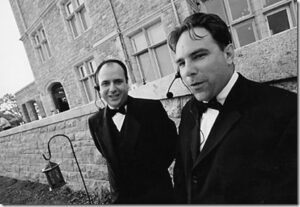Matthew Dicks's Blog, page 13
July 18, 2025
It’s just a park.
I was walking with a client to a restaurant for dinner when she pointed at a large, grassy field in the park and said, “I love this green space.”
“You mean that field?” I asked.
I hate words like “green space,” which seek to elevate something that already has a perfectly good name.
As I’m fond of saying:
“Not every thing needs to be a thing.”
This is a good example of that sentiment.
A green space is defined as “an area of grass, trees, or other vegetation set apart for recreational or aesthetic purposes in an otherwise urban environment.”
So a park. Maybe a public garden if you want to be a fancy pants, but either way, we have a name for this thing, and it’s not green space.
Some other examples of this foolishness include:
Pre-owned vehicle → Used car
Rightsizing → Laying off employees
Experiential learning environment → Classroom
Wellness journey → Exercising
And my least favorite of all:
“Negative patient outcome” → Death

July 17, 2025
Some good customer service news
Over the past month, I’ve written about some unfortunate customer service situations related to hotels.
One involving a Hilton in Miami.
The other involves the Holiday Inn Express in Newington.
Hilton, for the record, offered me restitution in the form of rewards points. It wasn’t exactly overwhelming, but I was pleased to receive a response to my complaint.
Holiday Inn has refused to respond to my business partner regarding their egregious actions, despite promising to do so.
He’s now considering legal actions.
However, not all customer service situations are terrible, and when they delight, they deserve a little attention too.
Here are two:
Back in April of this year, Grill 110 in Canton, Connecticut, offered us a less-than-ideal experience. After writing about the experience, I was immediately contacted by the person who manages The Shoppes at Farmington Valley, where the restaurant is located. She apologized on behalf of the restaurant, even though she was not directly affiliated with Grill 110 in any way, and offered to make up for the poor service by meeting me and my family at the Shoppes and taking us for ice cream.
It took until July for us to finally return to Canton, but she continued to email me, reminding me that she was ready and willing to get together when the time was right.
This constant contact was the most impressive part of the whole experience. Rather than leaving it up to me to reach out when the time was right, she reminded me of her offer at least three times between April and July.
When we finally arrived in Canton, she greeted us outside Ben & Jerry’s. She gave us a gift card for the store, bags full of swag from various shops, another apology, and a great conversation about the history of The Shoppes at Farmington Valley and the importance of customer service.
She turned a negative experience in a restaurant into an exceedingly positive experience that will bring us back to Canton again and again.
We’ve already been back twice since that day.
She gets it. And her efforts were deeply appreciated.
Two days ago, Elysha and I celebrated our wedding anniversary in New York City, where we visited The Met and The Whitney, saw a Broadway show, and enjoyed some delicious meals. When the person checking us in at our hotel — the Chatwal by Hyatt on 44th Street — asked what brought us to New York, I told her that it was our anniversary.
Shortly after arriving in our room, there was a knock on the door. The front desk staff had sent up a bottle of champagne, a charcuterie plate, and a card congratulating us on our anniversary.
Beautiful and brilliant. A gesture deeply appreciated by Elysha and me. We ate some of the meat and cheese before heading off to dinner and enjoyed the champagne after returning from the show.
The hotel also provided complimentary slippers to their guests — which are almost always single-use and disposable — but Elysha had always wanted a pair of travel slippers for hotel visits and saw this pair as small enough to include in future travels and surprisingly comfortable. Rather than just assuming they were single-use, she asked someone at the front desk the next day if they would be disposing of the slippers after our stay, and he said yes.
She was pleased. Travel slippers acquired.
But as we stood at the elevators, waiting to go up, the man appeared with two brand-new pairs of slippers, still wrapped in their sealed bags. “Here,” he said. “These are for you.”
Another tiny gesture that meant a lot.
The next time we are staying in New York, we will be staying at The Chatwal by Hyatt. They have earned our business.
I’ll also be writing to them, thanking them for their excellent service and crediting the front desk staff for their attention to detail.
Providing excellent customer service doesn’t require a lot. Simply meeting customers’ expectations is usually enough.
Exceeding expectations by correcting mistakes quickly and consistently, and delighting customers with small, meaningful gestures, is enough to bring people back again and again and speak highly of you and your company in the future.


July 16, 2025
Wedding anniversary #19
Yesterday, Elysha and I celebrated 19 years of marriage by taking a two-day getaway to New York City.
Clara is entering week three of her time at camp in Vermont, and Charlie is spending a few days in the Berkshires with his grandparents, so for one of the few times in our marriage, we were celebrating our anniversary alone.
We started our day by driving to New York City. We spent the first two hours talking — constantly and endlessly — because I sometimes think the biggest struggle in our marriage is finding enough time to say everything we want to tell each other.
Then, with about half an hour to go, we turned on an audiobook because we’ve also spent more than two decades together relentlessly listening to music, books, and podcasts.
After a quick lunch, we spent the afternoon at The Met, taking in the new John Singer Sargent exhibit.
I knew that Sargent was a painter. Maybe.
Elysha seemed to know just about everything about Sargent and had seen his work before.
Together, we walked through the exhibit, listening to an audio tour of some of the paintings and discussing what we were seeing. I learned a lot about Sargent and fell in love with some of his work. He is best known for his portraits, but I preferred his other paintings a lot more.
Sargent also painted the famous “Madame X” portrait for the French salon, which set French sensibilities abuzz for a time, with the work being perceived as lewd, salacious, and tragically American. I loved this story. I love it when an artist of any kind makes fancy little people angry.
Sadly, Sargent took the criticism to heart for a while.
Had I been his friend at the time, I would’ve told Sargent that upsetting fussy French aristocrats and pretentious art connoisseurs was the sign that he was doing something great.
Pushing back against the finery and artifice of any society is heroic in my mind.
If you aren’t collecting critics and enemies, you’re probably not doing your job.
Then we were off to our hotel, where we were greeted with champagne and a charcuterie plate, compliments of the hotel staff, alongside a lovely note wishing us a happy anniversary.
We ate dinner at a beautiful French restaurant, enjoying a fantastic meal and dessert, then headed to Broadway to see John Krasinski perform in his solo show, “Angry Alan.”
A brilliant performance of an excellent show.
We ended our day back in the hotel, discussing the play, looking at old photos from our previous anniversaries, reading, and talking some more. Our final conversation of the night, oddly enough, was about Henry James. I was reading “Walden” by Thoreau before turning out the lights, and somehow, we ended up debating whether James was an American or British author.
Unable to rest without knowing, I reached for my phone to check,
He’s both. Born in the United States. Spent most of his career in England.
A couple of nerds debating nineteenth-century literature before bed.
When I think back on yesterday, I think it’s a perfect encapsulation of our 19 years of marriage and 23 years as a couple, which is to say:
Elysha and I like to stand beside each other, often holding hands, talking about things, and taking in the world:
Art, food, theater, music, sports, politics, and literature. Plus, of course, our kids, family, friends, and cats.
No matter where we are standing or what we are doing, I never have a moment when I don’t have something to say to or ask my wife.
Elsyha and I have been engaged in a 19-year conversation, encapsulated in our marriage, filled with insight, laughter, debate, learning, and love.
I ended the night by thanking Elysha for marrying me. She laughed, but I was serious.
When you’re someone as brilliant and beautiful as my wife, you have choices.
She chose me.
And that’s no attempt at silliness or self-deprecation. When I told my former boss, Plato Karafelis, that we were dating on April 1, 2003, he said, “Matt, I know it’s April Fool’s Day. You’re not tricking me with this.”
“No,” I said. “I’m serious. We’re dating.”
He walked away, laughing. “Like Elysha Green would ever in a million years date Matthew Dicks.” Then he laughed some more.
“It’s true!” I shouted.
Though he would officiate our wedding three years later, it took him way too long to believe me.
He was right.
Elysha is my luckiest break ever.
Thank you for marrying me, babe. I still can’t believe it.

July 15, 2025
Not a hippo
A month ago, one of my former students, for whom English is a second (and brand new) language, said:
“Mr. Dicks, you look like a hippo.”
I opened my mouth to explain the problems of body shaming, and that even though we often tease each other in class, this kind of joke is never funny.
Also not true!
I’m actually in great shape, damn it. Riding my bike daily. Carrying my golf bag on my back and walking the course. Doing all those damn push-ups and sit-ups and planks every morning.
How dare you!
Before I could get any of that out, my student added:
“I call Mr. Dicks a hippo because they both don’t have much hair.
Admittedly, I have more hair on my head than a hippo, but I could also see his point.
This is also called misdirection, a storytelling and comedic strategy in which a performer says something that takes an audience’s mind in one direction, only to upend that assumption with something surprising and amusing.
Apparently, he’s learning the nuances of English even faster than I thought.
Or he got lucky.
Either way, I was annoyed. I don’t like it when students are funnier than me.

July 14, 2025
Fruit cocktail eaten. Promise kept.
Del Monte Foods, the 138-year-old company best known for its canned fruits and vegetables, has filed for bankruptcy and is looking for a buyer.
I’m hoping they find one soon.
Fruit cocktail in heavy syrup was a staple at my grandparents’ Christmas morning breakfasts. Every year, as I ate my bowl of that syrupy goodness at a long table filled with aunts, uncles, and cousins, I wondered why I didn’t get to eat fruit cocktail more often.
It’s so good. Why relegate it to Christmas morning?
As a kid, I promised myself that I would keep a can of fruit cocktail in my pantry at all times as an adult. It would no longer be a Christmas treat.
Then I failed to keep that promise. Never purchased fruit cocktail even once, even though I still think it’s delicious.
I mention this failed promise in a longer story about failing to keep a host of childhood promises, but discovering that I kept the most important promise I ever made as a child.
Last month I told that story on a stage at Charlie’s school. Charlie is featured in the story, so he enjoyed becoming part of the show. At the end of the story, I reached behind the curtain and produced a can of fruit cocktail.
“Tonight I’ll finally keep that promise I made about fruit cocktail, too,” I told the audience of seventh graders. “Charlie and I will eat it together after school today.”
He had never eaten fruit cocktail before.
Six hours later, we sat on the deck, eating bowls of fruit cocktail in heavy syrup.
Charlie loved it. Me, too. Four cans are sitting in my pantry today. It took me a while. Longer than it should.
But promise kept.
Except that the company that makes the brand of fruit cocktail that my grandparents served at Christmas has now declared bankruptcy.
Hopefully, they find a buyers soon. It took me more than 30 years to keep that promise.
I want to keep on keeping.

July 13, 2025
The insidiuous nature of posthumous awards
Major League Baseball commissioner Paul Manfred has revoked the permanent ineligibility of banned baseball players upon death, meaning that these deceased players are now potentially eligible to enter Cooperstown in the Hall of Fame.
Many were average players who would never have been voted into the Hall of Fame, including those on the infamous game-rigging Black Sox.
But two were good enough to be elected into the Hall of Fame, absent their transgressions:
Pete Rose — banned for betting on baseballShoeless Joe Jackson of the White Sox — accused of throwing the 1919 World Series on behalf of gambling interests.Will they be voted into the Hall of Fame?
It’s unlikely.
Joe Jackson maintained his innocence for his entire life, but he last played baseball in 1920. He’s not exactly top of mind for the Eras Committee, who consider candidates beyond their period of eligibility.
Peter Rose admitted to betting on baseball, which, for most people associated with baseball, is enough to keep him out of the Hall of Fame.
Gambling nearly destroyed baseball a century ago, and the rules against gambling are respected and honored by players today.
I don’t have a strong opinion about either player being inducted into the Hall of Fame. I can see arguments on both sides.
But here is my beef:
I can’t stand posthumous awards. I despise the thought that someone might die never knowing that they have been recognized for greatness or had their name enshrined in some memorial.
Posthumous awards are like serving dessert after you’ve left the party.
Posthumous awards are like a standing applause long after the band has finished playing and gone home.
Posthumous awards are like being crowned prom king at your funeral.
They suck.
If you want to honor, award, or enshrine a person, get to it. People get hit by buses and eaten by bears and stick their fingers in electrical sockets all the time. Delaying risks someone never knowing in this one life we all have that they were appreciated, admired, or, in the case of the Hall of Fame, recognized forever as one of the best.

July 12, 2025
Count your blessings, and sometimes, keep your mouth shut.
Many years ago, I was standing at the copy machine at my school, waiting as it churned out homework for my students. A handful of teachers were standing in the room with me, waiting for their turn.
Someone asked me if I had any plans for my weekend.
I told them it was going to be awful. My DJ company was in full swing back then, and I had weddings on Friday night, Saturday night, and Sunday afternoon, with the added responsibility of officiating the Sunday wedding as well.
My partner, Bengi, and I have worked at hundreds of weddings over the years, but three in one weekend was unusual.
I went on to complain about the distance to the venues and the rain that was forecast for the entire weekend, which always made things more difficult.
At the end of the day, after the bell had rung and my students were gone, one of the colleagues in that copy room appeared in my doorway and asked if we could talk.
“Of course,” I said.
She sat down across from me at my desk and said:
“Listen, you need to remember that most of the people you work with have one job. That’s it. For them, this job is all they can manage. And if they’re married, it’s probably true for their spouse, too. That means that most of them, including me, are on a fixed income. If they want to buy a new couch or go on vacation or replace the tires on their car, they need to save for those expenses. They don’t have the option to work a job like yours on the weekend and earn hundreds — probably thousands — of dollars in just a couple of days doing what you do. I bet a lot of them would love to be able to do what you do, but they can’t. They are exhausted from this job, and even if they aren’t, jobs that pay a week’s salary on a Friday night are hard to come by.”
Then…
“Just be careful when it comes to complaining. You complain about working all weekend, but some people dream of being able to do what you do.”
I’m sure her words weren’t exactly what I remember them, but the moment left such an impression on me that I’ll bet they’re close.
That advice has remained in my heart and mind ever since.
My company was also not born out of luck or gifted to me by my parents. Bengi and I worked smart and hard to be in that position. We earned the ability to do that job and earn those paychecks.
And it was perfectly fine to lament the long weekend I had ahead of me. If I wanted to complain to Bengi or Elysha, that would have been fine too.
But she was right.
It’s important to count your blessings. Remain grateful for what you have and can do. Remember the circumstances of those around you. Think about how your words might be heard by others. Try like hell to be happy with all you can do, even when it becomes difficult or onerous, or time-consuming.
I think about that advice all the time. It’s caused me to constantly reflect on how fortunate I have been and continue to be.
I’m so grateful.
I don’t DJ many weddings these days, but I’ve replaced that work with other jobs:
Writing and publishing books. Public speaking, Consulting. Speak Up and Storyworthy.
And thanks to my colleague, I remain grateful to this day. Enormously so.
For those words and that advice, I am forever grateful.
More importantly, I am also ever vigilant about the impact of my words on others. I remind myself that their circumstances might be very different than mine. I remember that my petty, stupid complaint might represent their dream scenario.

July 11, 2025
A mistake is an opportunity to impress. Holiday Inn doesn’t understand this.
I had the pleasure of spending yesterday in Pittsburgh with an incredible company that owns and operates restaurants and food service for universities, corporate dining facilities, sports teams, and many other locations.
It was truly a pleasure. The company is run by individuals who recognize the importance of exceptional service and have made it their core mission to bring joy to their guests.
Immediately after leaving these good folks, I heard from my business partner, who is unfortunately dealing with a company unlike my client in every way.
It’s a company that is behaving unprofessionally, unethically, and stupidly:
Holiday Inn Express, owned and operated by IHG Hotels & Resorts.
Here is what happened to my business partner during his visit last week:
On day two of a four-day stay at the Holiday Express in Newington, CT, he returned to his room in the early evening to find it empty. All of his belongings were gone.
He assumed he had been robbed.
He immediately went to the front desk to report the robbery and discovered that the hotel staff had emptied his room earlier that day. They had thrown his belongings into trash bags and placed those bags in an electrical closet.
We are still not entirely sure why this happened, except to say that a mistake was made. For some reason, a staff member thought he was supposed to check out that day and cleared his room when the check-out time passed, even though the hotel had plenty of unoccupied rooms at the time.
This was later confirmed by a hotel employee.
Instead of violating his privacy and rummaging through his belongings, the hotel staff could have simply disconnected his key card and awaited his return later that day.
Instead, they threw his belongings, including his refrigerated food, into trash bags and placed them in a closet, which seems crazy to me. Less than six hours after they thought he was supposed to check out of a hotel filled with empty rooms, they entered his room and took his things.
Can you imagine how it would feel to discover that a random staff member collected your clothing, undergarments, toiletries, passport, personal documents, technology, food, and other personal items, then stuffed them into garbage bags and shoved them into a closet?
I would’ve lost my mind.
Still, mistakes happen. Even galactically stupid ones.
As I often explain to clients, mistakes like this are often a gift to your business. They are an opportunity to apologize and overwhelm your customers with shockingly unprecedented levels of restitution.
Yes, you made a mistake, but now you have the chance to impress your customer beyond belief, and it often costs you very little to do so.
The Holiday Inn failed miserably in this regard.
First, they claimed to have called my partner before emptying his room. A quick look at his phone showed no missed calls, so they lied.
Other lies were told about possible room switches, falsified notes, and timeline inconsistencies. When he demanded to speak to a manager, the staff members said he was acting belligerently and threatened to call the police.
My partner suggested and then asked the staff to do so. He still hadn’t seen his belongings and had no idea if anything had been stolen. He thought the police would be helpful, so officers quickly arrived at the hotel and handled the situation brilliantly, acknowledging the terrible position my partner had been placed in.
Finally, he got the manager on the phone and was assured the situation would be handled in the morning and restitution would be made.
At this point, the manager should have said, “We apologize. Your entire stay is complimentary. Additionally, I’d like to offer you a gift card to a local restaurant for dinner on us, as well as two complimentary nights at our hotel the next time you’re in town. We really messed up.”
This would have been an ideal resolution to a terrible mistake and the blatant lies told about it by staff members.
It may have even earned them a lifelong customer.
Instead, he left town with no resolution. No restitution. No response from anyone in charge.
So far, he has:
Contacted IHG Corporate three times, without resolution.
Filed two complaints with Expedia, which attempted to contact hotel management on his behalf. Both attempts were denied.
Repeatedly asked hotel management to take responsibility and was met with silence and deflection.
He is now pursuing formal complaints, a credit card dispute, and legal options to seek justice.
Holiday Inn has managed to turn an egregious error into something even worse as my partner explores his options with attorneys.
It’s not hard to do the right thing when you make a mistake, and when you fail to do so, it can often cost you a lot.
Lost revenue. Bad publicity. Legal snafus. A tarnished reputation.
I recommended the Holiday Inn in Newington, CT, to my business partner, and I have recommended it to many people in the past who visit the Hartford area.
I will never do so again.
This post will reach tens of thousands of readers, including many who live locally to this particular location.
When someone mentions the Holiday Inn to me in the future, I will have a story to tell.
Tell it, I will.
Mistakes are going to happen regardless of how hard you try to avoid them. Although this mistake and the subsequent lies were especially egregious, the situation could have been made right. This was an opportunity to impress.
When you can’t even manage the simple act of apologizing and offering restitution of any kind, you don’t deserve my business.
I don’t think they deserve your business, either.

July 10, 2025
Nothing will come of nothing
Shakespeare’s King Lear famously said, “Nothing will come of nothing,” which seems a fairly obvious statement.
In the play, Lear demands extravagant displays of love from his daughters, particularly from his youngest and most beloved daughter, Cordelia. He believes that without outward expressions of affection, there can be no genuine love or worth, and thus, no inheritance for Cordelia.
This foolish belief leads to his downfall.
However, Lear was right when he said, “Nothing will come of nothing. Absent purpose, effort, and action, little will happen by way of progress or change. You can expect results without putting in the world.
Yet the world also seems filled with people these days who aren’t doing much but expecting a lot.
People who seem unwilling to make painful and difficult sacrifices to build a better future.
Then I stumbled across someone who proved me wrong.
Last week, I stopped at a rest area on the Mass Pike on the way home from Boston. It was late, but the man behind the counter was moving fast and was exceedingly friendly, so I said, “You’re moving around here like you just started your day.”
“Nope,” he said. “This is my second job. I’m working 16-hour days.”
“Ouch,” I said. “I’m sorry.”
I explained that I’ve also worked two full-time jobs in my life — more than once — and it was never pleasant.
“Don’t be sorry,” he said. “I choose this. And it’s not forever. I’m just piling up money to start my own business. In two years, I’ll be good to go. Less if I start working on the weekends, too. And I just might.”
“What’s the business?” I asked.
“Vending machines,” he said. “If I keep working like this, I’ll save at least $100,000 in two years, and that’ll buy my ten or twelve high-end machines. Each one will make about $10,000 per year in profit, which means after one year, they’ll be paid off and everything will be profit.”
He went on to explain other aspects of the vending machine business, including the importance of identifying ideal locations, which he is currently doing, and how little time needs to be invested in them once they are operational.
I know someone in the vending machine business, and he’s right. It’s an easy way to make money if you can make the initial investment and find high-traffic locations.
I instantly loved this guy. I wished him the best of luck and told him how much I admired his work ethic.
“I got no choice,” he said. “I’ve been on my own since I was 18. If I don’t make something for me, no one else will.”
As someone who has also been on his own since I was 18, I loved this guy even more. A part of me wanted to ask him to exchange contact information so we could stay in touch and become friends. But he lives about two hours from me and clearly has no time for new friends right now.
I also think it might have been weird to ask him for his phone number, because I wanted to be his friend.
So instead, I completed my purchase, wished him luck one more time, and went on my way, feeling a little bit better about the world and our future.
I don’t wish 16-hour days on anyone. They are brutal, regardless of the work you’re doing.
I don’t wish anyone to be on their own at the age of 18. It’s scary, sad, and lonely. Living without a safety net of any kind at such a young age is terrifying.
But if you want a bright future, you take what the world gives you and fight like hell for your piece of it.
That rest area clerk — whose name I sadly do not know — understands this. He’s fighting for his future. Making enormous sacrifices to guarantee himself better days. Working like hell so that somewhere down the road, he won’t need to work nearly as hard anymore.
He’s building his own safety net. Maybe building a safety net for future generations, too.
I loved that guy. He’s one of the most impressive people I’ve met in a long time. I’m rooting for him.
He was also a good reminder for me:
I often see and hear from people who are unwilling to do hard things. I see them in my life, and I see and hear about them from others and in the media. I hear about them from businesspeople — clients and friends — who struggle to find quality employees to staff positions at the workplace. People seem to be caught in a troubling paradox:
A diminishing willingness to put in sustained, difficult work paired with an inflated sense of entitlement to success and reward. There’s a growing expectation that fulfillment, wealth, and recognition should come quickly and with minimal sacrifice—fueled, perhaps, by curated online lifestyles and instant gratification culture.
But maybe that’s not as true as I once thought.
I don’t hear nearly enough about people like the rest area clerk, but maybe that’s because they’re too busy getting things done to complain about their lot in life. Perhaps they are working and hustling and so busy making a future for themselves that they are flying below the radar, quietly changing their lives and the world for the better.
Maybe there are more of these remarkable people that I realize.
I really hope so.

July 9, 2025
Peanut butter and tuna fish sandwich: MY INVENTION
Marco Sumayao of Chowhound writes about the peanut butter and tuna fish sandwich:
“The origins of the sandwich itself are difficult to trace. Author Matthew Dicks claims he’s the inventor, but others online have recollections of the sandwich being made by their mothers and their grandmothers. It’s unclear exactly how the sandwich came to be, but food traditions elsewhere suggest that this particular mix of flavors isn’t as unusual as we might assume.”
I don’t like this “Author Matthew Dicks claims he’s the inventor” one bit.
Claims?
Perhaps the peanut butter and tuna fish sandwich was a simultaneous invention, meaning two or more people develop the same idea or create the same invention independent of one another, similar to how both Charles Darwin and Alfred Russel Wallace both independently developed the theory of natural selection around the same time, but Darwin published first and gets the lion’s share of the credit.
However, I certainly didn’t steal the idea, especially since I invented the sandwich in 1981, when the internet didn’t exist and my ability to learn anything about anything was limited and often nonexistent.
I definitely invented this sandwich, even if others also invented the sandwich.
I invented the peanut butter and tuna fish sandwich out of necessity.
As a kid, my mother occasionally served us tuna fish sandwiches for lunch. Rightfully despising mayonnaise more than almost any other food product on the planet, my sandwiches consisted of tuna on white bread.
Nothing more.
Lacking any binding agent, the tuna in my sandwich would fall out whenever I lifted it off the plate, making it difficult and annoying to eat.
One day, as my mother was making our lunch, I saw a can of tuna fish sitting beside a jar of peanut butter, and I had an inspiration. I took a dollop of peanut butter and popped it into the microwave for a few seconds, just long enough to soften it a bit, then I mixed it with tuna fish before placing it on my bread.
The peanut butter and tuna fish sandwich was born.
And it was good.
Years later, the sandwich became a pop culture curiosity thanks in part to movies like Mr. Deeds (2002), where Adam Sandler’s character claims it as his favorite sandwich.
I’m not saying Sandler stole the idea from me, either, but it was most definitely my idea first.
The typical reaction when I mention this sandwich is disgust, which annoys me for two reasons:
People have told me I should try more foods and give them a chance. Yet when I suggest that they might find this sandwich tasty, people refuse to even consider the possibility.People eat raw fish on a regular basis. Bull testicles. Olive loaf. Jello salad. Chitlins. Many of these foods probably seemed disgusting to you at some point (and some might still sound disgusting), but they are all regularly eaten in this country. You’re almost certainly eating food today that you once thought would be awful. Is a peanut butter and tuna fish sandwich really all that different?For the record, I’ve served friends peanut butter and tuna fish. Years ago, I designed and operated a race for my friends, modeled after the television show The Amazing Race. Teams of two raced around town, completing tasks and taking on challenges. It was great fun and even better when Elysha became involved after the first year.
Each one of my races had a theme. One year, the theme was me:
Tasks and challenges related to my life.
One of my tasks was to eat a peanut butter and tuna fish sandwich. At least two people participating in that race admitted to liking the sandwich, and I have served it to several others since then.
As far as I know, at least two people still eat peanut butter and tuna fish sandwiches regularly.
I’m not saying you will like peanut butter and tuna fish sandwiches. I am merely suggesting that you have an open mind about the thing. If you’re willing to try raw squid or partake in ice cream that tastes like leftover cereal milk or pretend that green bean casserole is little more than a disgusting Trojan horse for Campbell’s cream of mushroom soup, maybe you could give my creation a chance.
Or at least not mock it until you’ve tried it.
As for Marco Sumayao of Chowhound, yes, it’s true. I claim to have invented the peanut butter and tuna fish sandwich because I did.
More than 40 years ago.
Independent of anyone else.
Don’t you dare steal my thunder.




